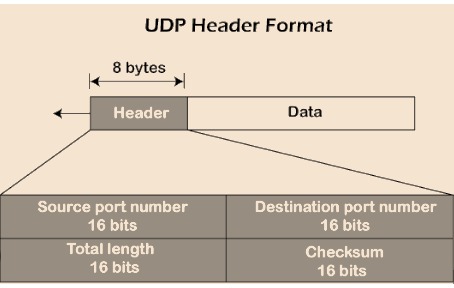UDP - User Datagram Protocol: A Deep Dive
The User Datagram Protocol (UDP) is a fundamental transport layer protocol within the TCP/IP suite, responsible for communication between applications on networked devices. Unlike its counterpart, TCP (Transmission Control Protocol), UDP prioritizes speed over reliability, making it suitable for specific communication needs.
Here's a comprehensive breakdown of UDP:
Core Function:
- UDP offers a connectionless service, meaning it doesn't establish a dedicated connection between sender and receiver before transmitting data. It simply sends data packets (datagrams) containing source and destination information without any guarantees of delivery, order, or error checking.
- Applications using UDP are responsible for implementing their own mechanisms for reliability or error handling if needed.
Key Characteristics:
- Unreliable Delivery: UDP datagrams may not reach the destination due to network congestion, dropped packets, or other issues. There's no mechanism to ensure delivery or request retransmission of lost packets.
- Out-of-Order Delivery: UDP datagrams may not arrive in the same order they were sent. This can be problematic for applications that rely on data sequence.
- No Flow Control: UDP doesn't implement flow control mechanisms like TCP windowing. The sender transmits data as quickly as possible, potentially overwhelming the receiver if not properly managed by the application.
- Low Overhead: UDP has a simpler header structure compared to TCP, reducing overhead and enabling faster transmission. This makes it ideal for time-sensitive applications where speed is critical.
Benefits of UDP:
- Speed: UDP's connectionless nature and minimal overhead contribute to faster data transmission, making it suitable for real-time applications like online gaming, live video streaming, and Voice over IP (VoIP).
- Simplicity: UDP's design is simpler compared to TCP, making it easier to implement in resource-constrained devices or embedded systems.
- Lower Latency: The absence of connection establishment and complex error checking mechanisms reduces latency (delay) in data transfer.
Applications of UDP:
- Real-time Communication: UDP is widely used in applications that prioritize real-time data exchange over guaranteed delivery, like online gaming, video conferencing, and live streaming. Even with occasional packet loss, the overall user experience might not be significantly impacted.
- DNS Lookups: Domain Name System (DNS) lookups often leverage UDP for their initial queries due to its speed advantage. Retransmission can occur if no response is received within a specific timeframe.
- Streaming Media: UDP is sometimes used for streaming media like live broadcasts, where occasional dropped packets might be tolerable, and smooth playback is the priority.
- Simple File Transfer: For simple file transfers where error correction might be handled at the application level, UDP can offer faster transmission compared to TCP.
Comparison with TCP:
|
Feature |
UDP |
TCP |
|
Connection |
Connectionless |
Connection-oriented |
|
Reliability |
Unreliable (no delivery guarantee) |
Reliable (guaranteed in-order delivery) |
|
Order |
Out-of-order delivery possible |
Ordered delivery |
|
Flow Control |
No flow control |
Flow control with windowing |
|
Error Checking |
No error checking |
Error checking with retransmission |
|
Overhead |
Lower overhead |
Higher overhead |
|
Speed |
Faster |
Slower |
|
Applications |
Real-time communication, DNS, etc. |
File transfer, web browsing, etc. |
In Conclusion:
UDP serves as a valuable tool in network communication, offering speed and simplicity for specific use cases. By understanding its core characteristics, benefits, and limitations, you can make informed decisions about choosing the right transport protocol (UDP or TCP) for your application's communication needs. Remember, UDP prioritizes speed over reliability, while TCP prioritizes reliable and ordered data delivery.

